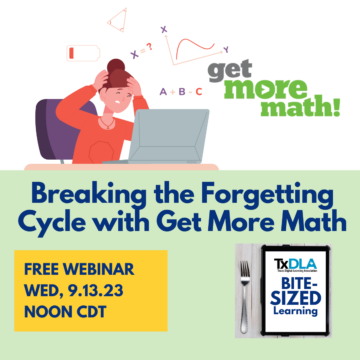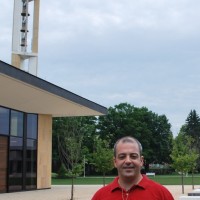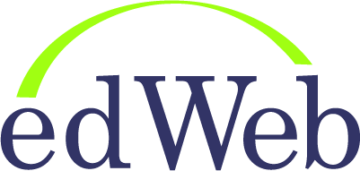November 8, 2023
Are These Vouchers on Steroids a Trainwreck in Slow Motion?
An item from the folks at the NEPC that may be of interest to some readers.
Are These Vouchers on Steroids a Trainwreck in Slow Motion?
Tuesday, November 7, 2023
Newsletter
Are These Vouchers on Steroids a Trainwreck in Slow Motion?
SHARE THIS EMAIL:
Termed “education savings accounts” (ESAs) these vouchers on steroids were the subject of 79 percent of the 111 voucher-related bills introduced in state legislatures in 2023. Five states enacted new ESAs (AR, IA, MT, SC, and UT). In addition, four states expanded existing ESA programs (FL,IN, NH,TN).
In most ways, ESAs are similar to traditional vouchers that parents have used for decades to pay for private schools at public expense. It’s just that they go a step farther, permitting parents to use the funds not just for private school tuition but for other education-related expenses such as school uniforms, homeschool curricula, and gym memberships.
In a recent article in the Brown Center Chalkboard, a publication of The Brookings Institution, a Washington, DC-based think tank, NEPC fellow Joshua Cowen of Michigan State University writes that he already sees signs that ESAs are following in the footsteps of traditional vouchers, which studies suggest lead to a flood of new providers, many of which quickly close, as well as tuition hikes at existing voucher schools.
“Unfortunately, the voucher research literature suggests that even with new schools opening, there simply are not enough effective private schools to go around,” he writes. “This might explain the dismal academic results over the last decade—and suggests a very real risk in today’s ESA initiatives if they produce large increases in private school enrollment.”
Drawing upon past research on traditional vouchers, Cowen predicts that ESAs will lead to lower student achievement. Evidence on traditional vouchers’ impact on rates of high school graduation and college enrollment is more mixed—but when positive effects were found, they were associated with students spending all four years of high school in a private school. However, private high schools that accept vouchers often experience high rates of churn. In Milwaukee, which Cowen has studied, 20 percent of voucher students left private schools annually. Academic improvements occurred once students returned to public schools.
Voucher advocates disappointed with academic results have blamed over-regulation for the poor outcomes.
Yet Cowen writes that “the only empirical evidence of the effects of accountability on a voucher program found that once voucher schools were required to use the same testing and reporting requirements as their public counterparts, voucher performance improved substantially.”
He added: “The lack of accountability is already raising problems in newer programs. In Arizona, for example, families had a number of questionable expenses approved, and in North Carolina, some private schools are claiming more vouchers than students actually enrolled.”
Unlike earlier traditional voucher programs, today’s vouchers are more likely to be universally available rather than to be offered to certain populations-such as students from low-income families.
“How these new, expanded programs will function is perhaps the key open question for research moving forward,” Cowen writes.
Data from traditional voucher programs has indicated that the larger the program, the worse the results tend to be. In the best case, that’s because there are too few effective private schools to serve expanded voucher programs; in the worst case, there are inherent limits to the choices parents can make when vouchers allow private schools to choose their students as well.
For example, private schools that accept vouchers may implement admissions criteria that screen out students with disabilities, students with low test scores, or emerging bilinguals.
Voucher-accepting schools are also permitted to refuse to accept LGBTQ+ students or families, and to fire or refuse to hire LGBTQ+ staff.
“[I]t remains to be seen how the new expansion of private school choice programs will ultimately affect educational opportunity,” Cowen writes. “But research on traditional vouchers suggests extreme caution when expecting new, favorable results simply because parents of children outside of public school can now spend public dollars on costs beyond tuition.”
This newsletter is made possible in part by support provided by the Great Lakes Center for Education Research and Practice: http://www.greatlakescenter.org
The National Education Policy Center (NEPC), a university research center housed at the University of Colorado Boulder School of Education, sponsors research, produces policy briefs, and publishes expert third-party reviews of think tank reports. NEPC publications are written in accessible language and are intended for a broad audience that includes academic experts, policymakers, the media, and the general public. Our mission is to provide high-quality information in support of democratic deliberation about education policy. We are guided by the belief that the democratic governance of public education is strengthened when policies are based on sound evidence and support a multiracial society that is inclusive, kind, and just. Visit us at: http://nepc.colorado.edu/
Copyright 2023 National Education Policy Center. All rights reserved.
No comments yet.
RSS feed for comments on this post. TrackBack URI
- SEO Powered Content & PR Distribution. Get Amplified Today.
- PlatoData.Network Vertical Generative Ai. Empower Yourself. Access Here.
- PlatoAiStream. Web3 Intelligence. Knowledge Amplified. Access Here.
- PlatoESG. Carbon, CleanTech, Energy, Environment, Solar, Waste Management. Access Here.
- PlatoHealth. Biotech and Clinical Trials Intelligence. Access Here.
- Source: https://virtualschooling.wordpress.com/2023/11/08/are-these-vouchers-on-steroids-a-trainwreck-in-slow-motion/
- :has
- :is
- :not
- 07
- 1
- 20
- 2023
- 40
- 7
- 8
- a
- About
- academic
- Accept
- accessible
- accountability
- achievement
- actually
- added
- addition
- address
- advocates
- affect
- All
- allow
- already
- also
- and
- Annually
- approved
- AR
- ARE
- arizona
- around
- AS
- associated
- At
- audience
- auto
- available
- based
- BE
- because
- begin
- belief
- BEST
- Beyond
- Bills
- broad
- brown
- but
- by
- CAN
- Carolina
- case
- Category
- caution
- Center
- certain
- Children
- choice
- choices
- Choose
- claiming
- Close
- CO
- College
- Colorado
- COM
- comment
- comments
- Costs
- counterparts
- criteria
- data
- DC-based
- decades
- democratic
- disabilities
- dollars
- Earlier
- Education
- educational
- Effective
- effects
- emerging
- end
- enough
- enrolled
- enrollment
- ESA
- Even
- evidence
- example
- existing
- expanded
- expansion
- expecting
- expense
- expenses
- experience
- expert
- experts
- Explain
- extreme
- families
- favorable
- feedback
- fellow
- few
- Fire
- five
- flood
- following
- For
- Forward
- found
- four
- from
- function
- funds
- General
- general public
- Go
- governance
- great
- guided
- gym
- had
- Have
- he
- High
- high schools
- high-quality
- Hikes
- hire
- How
- However
- HTTPS
- i
- ia
- identifier
- if
- image
- Impact
- implement
- improved
- improvements
- in
- includes
- Inclusive
- Increases
- indicated
- information
- inherent
- initiatives
- Institution
- intended
- interest
- just
- Key
- Kind
- Lack
- lakes
- language
- large
- larger
- Last
- lead
- left
- likely
- limits
- literature
- Low
- lower
- made
- make
- many
- May..
- Media
- memberships
- Meta
- Michael
- Michigan
- might
- more
- most
- motion
- moving
- MT
- National
- New
- newer
- Newsletter
- North
- north carolina
- November
- now
- number
- occurred
- of
- offered
- often
- on
- once
- only
- open
- opening
- Opportunity
- or
- Other
- out
- outcomes
- outside
- over
- parents
- part
- past
- Pay
- percent
- performance
- perhaps
- plato
- Plato Data Intelligence
- PlatoData
- pm
- policies
- policy
- policymakers
- poor
- positive
- possible
- Post
- practice
- Predicts
- private
- problems
- produce
- produces
- Program
- Programs
- provide
- provided
- providers
- public
- Publication
- publications
- Publishes
- question
- quickly
- raising
- Rates
- rather
- readers
- real
- really
- reduce
- remains
- Reporting
- Reports
- required
- Requirements
- research
- reserved
- resource
- Resources
- Results
- Reviews
- rights
- Risk
- same
- Savings
- SC
- School
- Schools
- scores
- Screen
- seen
- sees
- serve
- Signs
- similar
- Simple
- simply
- site
- slow
- Society
- some
- Sound
- spam
- spend
- Spending
- Sponsors
- Staff
- State
- States
- Step
- steroids
- strengthened
- Student
- Students
- studied
- studies
- subject
- substantially
- such
- suggest
- Suggests
- support
- syndication
- TAG
- tank
- test
- Testing
- than
- that
- The
- their
- There.
- These
- they
- Think
- think tank
- third-party
- this
- to
- today’s
- too
- top
- traditional
- Ultimately
- under
- universally
- university
- upon
- us
- use
- used
- uses
- very
- Visit
- washington
- ways
- we
- WELL
- were
- when
- which
- will
- with
- WordPress
- worse
- Worst
- written
- years
- yet
- Your
- zephyrnet















